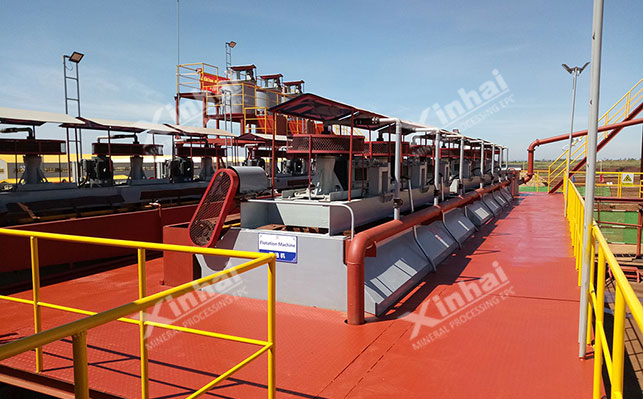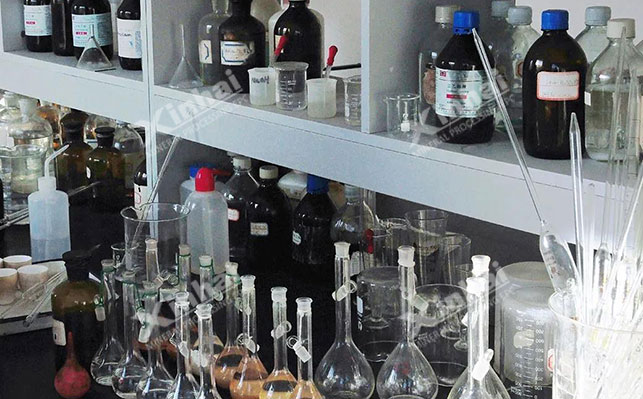Fluorite is widely used, and fluorite ores in different states can be used in different industries. In order to meet the needs of various industrial uses, it is imperative to improve the utilization rate of fluorite raw materials. In the mineral processing industry, the fluorite ore will generally use the flotation method to separate the concentrate. This article will introduce different types and flotation requirements for you in detail.

The main problem of fluorite flotation is the separation from gangue minerals
such as sulfide minerals, quartz, calcite and barite. The fluorite flotation
technology will be described in the following four aspects.
1. Flotation
separation technology of fluorite containing sulfide minerals
When treating
this kind of fluorite ore, xanthate collectors are added into the pulp to float
out the sulfide minerals. After the sulfide minerals are removed, a certain
amount of fatty acid can be added into the pulp to float the fluorite
concentrate. If necessary, add sodium sulfide for activation before flotation of
fluorite concentrate, and then add fatty acid for flotation. In order to prevent
the residual sulfide minerals in the pulp from affecting the quality of the
flotation fluorite concentrate, a small amount of cyanide can also be added to
the pulp to inhibit the sulfide ore.
2. Flotation separation technology of fluorite containing barite and
calcite
If gangue minerals such as barite and calcite are found in the
minerals after mineral analysis, the collector oleic acid can be added to the
pulp to preferentially float out fluorite, or a small amount of aluminum salt
can be added to activate the fluorite ore. In addition, the addition of dextrin
in the pulp can also play a role in activating fluorite, while dextrin can also
inhibit the emergence of barite and calcite. If the raw fluorite ore contains
more complex gangue minerals such as calcite, limestone, dolomite, etc., glue
baking and lignosulfonate can also be used, which have a good inhibitory effect
on these gangue minerals.
3. Flotation separation technology of fluorite containing quartz
When
quartz is contained in fluorite ore, fatty acid can be added as collector and
water glass as gangue mineral depressant during flotation. In order to ensure
the proper pH of the pulp, a certain amount of sodium carbonate needs to be
added. When water glass is added to the pulp, the amount should be strictly
controlled. Theoretically, a small amount of water glass can activate fluorite,
but excessive water glass will inhibit the flotation of fluorite ore. In actual
production, Cr3+and Zn2+will be added when fluorite separates quartz. These ions
not only inhibit quartz, but also inhibit calcite.
4. Separation technology of fluorite containing barite
When separating
fluorite and barite, the two minerals are mixed and floated out first, and then
separated. In mixed flotation, oleic acid is used as collector and water glass
as inhibitor. There are two separation methods for mixed concentrate: first, use
dextrin or tannin with iron salt to inhibit barite, and then use oleic acid to
float fluorite. Because fluorite ore has good floatability, a small amount of
oleic acid can be added; Second, barite is first floated out with alkyl sulfate,
while fluorite concentrate is left in the flotation cell.

In order to improve the flotation efficiency and concentrate grade, attention
should be paid to the pH, temperature, flotation particle size and other aspects
of the pulp. The technical requirements for improving fluorite flotation
efficiency will be described in the following four aspects.
1. Pulp pH value
in fluorite flotation
The pulp pH value has a great influence on the
flotation of fluorite concentrate. When oleic acid is used as the collector of
fluorite, the floatability of fluorite is good when the pH value of pulp is
8-11, and 80-90% of fluorite concentrate can be recovered.
2. Pulp temperature of fluorite flotation
During flotation, the index of
fluorite flotation can be improved by properly increasing the pulp
temperature.
3. Particle size of fluorite flotation
In practical
production, the flotation selectivity of coarse fluorite is high, and the
concentrate grade is high, but its recovery is low; The medium grade fluorite
has high flotation grade and high recovery; The concentrate grade and recovery
rate obtained from flotation of fine-grained fluorite ore are relatively low, so
during the beneficiation process, the granularity of fluorite entering the
flotation needs to be controlled to avoid resource waste.
4. Reagent for
fluorite flotation
Various reagents are used for fluorite flotation. Besides
oleic acid, the collector can also use alkyl sulfate, alkylsulfonated
succinamine, sodium oleate sulfamate, and other sulfonic salts and amines. The
regulator of fluorite flotation can be water glass, sodium metaphosphate,
lignosulfonate, dextrin, etc.
The above are the flotation technologies and flotation requirements for different types of fluorite. In actual production, the appropriate process should be selected according to the ore composition. It is suggested to conduct beneficiation test before beneficiation, and customize beneficiation scheme according to test results, so as to make full use of resources and improve concentrate recovery.